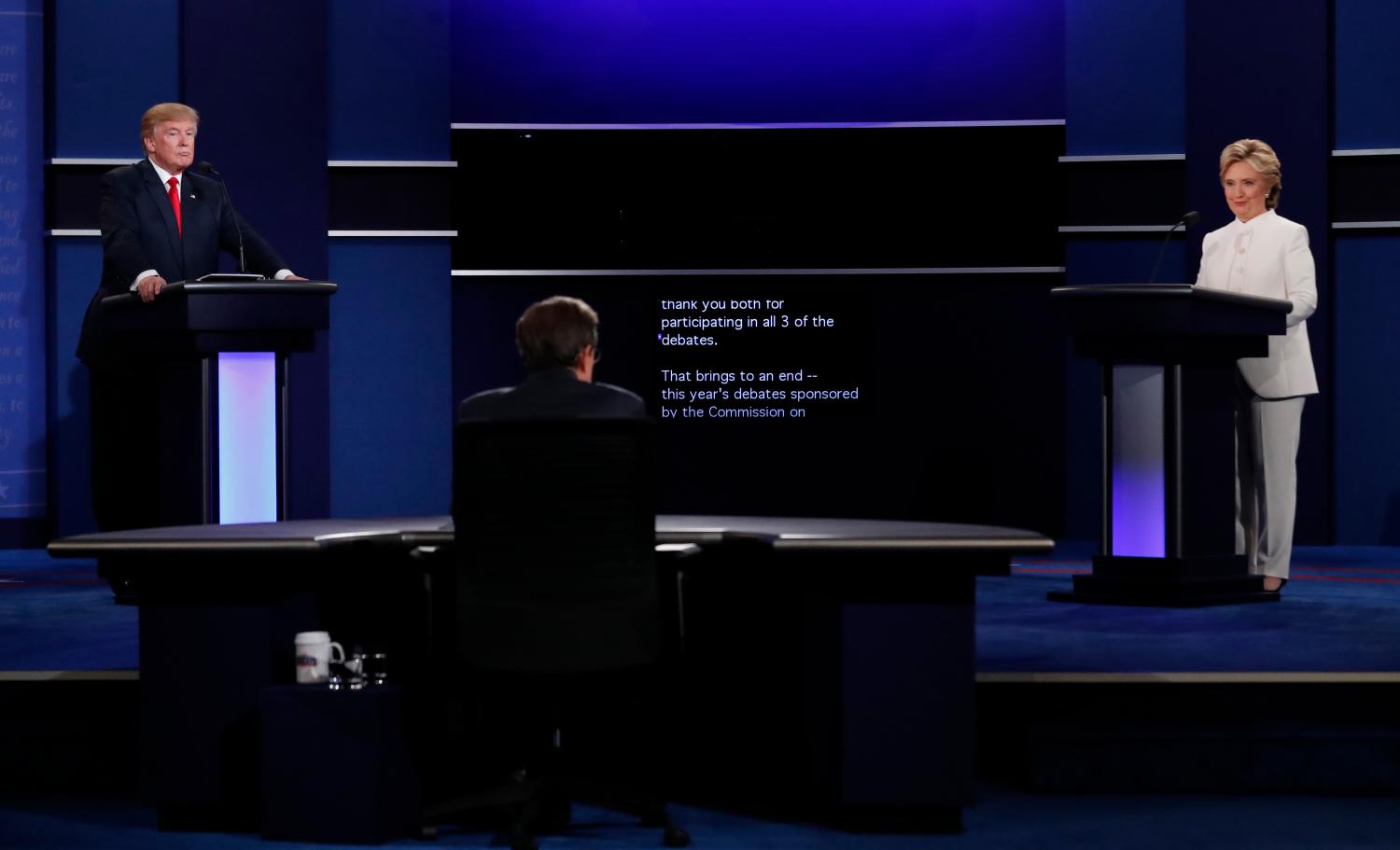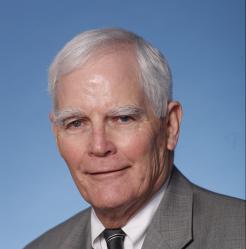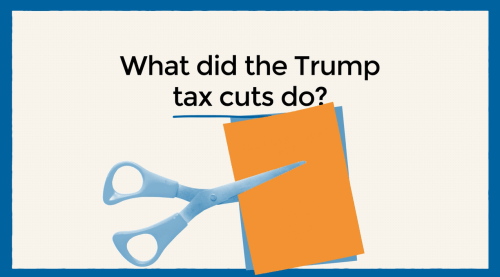The following brief is part of Brookings Big Ideas for America–an institution-wide initiative in which Brookings scholars have identified the biggest issues facing the country and provide ideas for how to address them.
Presidential elections usually feature extended arguments by the respective candidates about the major issues facing the nation. If the candidates do not address the most important issues, the press and the presidential debate moderators are likely to raise them instead. Even so, skilled politicians have little trouble avoiding questions they do not want to answer, often by simply answering another question. In the election of 2016, neither candidate said much about the national debt, one of the top issues affecting the nation’s long-term well-being.
The facts and projections that define the debt issue have not been discussed in detail by either candidate, nor has either candidate presented a plan to control the predicted increase in the nation’s debt, let alone how they would actually reduce the debt as a percentage of GDP. Given the stark and troubling nature of the debt figures, it is little wonder the candidates have avoided them like the plague. According to the most recent report from the Congressional Budget Office (CBO), debt held by the public will equal 77 percent of GDP (about $14 trillion) by the end of 2016, the highest level since the end of World War II, and is predicted to rise to 86 percent of GDP ($23 trillion) within ten years.1 Some economists believe that when a nation’s debt reaches 90 percent of GDP, it begins to restrain economic growth.2 Other economists believe the figure is considerably above 90 percent, perhaps as high as 120 percent.3 But whatever the level of dangerous debt accumulation might be, virtually every analyst recognizes that at some level the risks of deleterious consequences become likely.
Given the stark and troubling nature of the debt figures, it is little wonder the candidates have avoided them like the plague.
According to CBO, the growth in the annual deficit and the amount each annual deficit adds to the nation’s debt to reach 86 percent of GDP by 2026 is caused primarily by the growth of spending on Social Security, health care, and interest payments on the debt, combined with revenues that remain more or less fixed as a percentage of GDP (in CBO estimates, revenues over the next decade hold fairly steady at between 17.8 percent and 18.5 percent of GDP). Another factor that adds to the annual deficit is the Congressional habit of financing “must pass” legislation by ignoring budget rules and simply increasing the debt.
CBO has supplemented its 10-year projections with 30 year projections to 2046.4 These projections indicate that the debt is likely to continue increasing beyond the 10 year window and reach 141 percent of GDP by 2046. Even those who argue that the current level of debt is not a serious problem would be likely to agree that it would not be good policy to let the debt grow to more than 140 percent of the nation’s economy. One of the reasons it is difficult to rouse politicians or the public about the rising debt is that there is no specific level of debt at which most economists, politicians, or the public would say “This is it; we have to draw the line; we’re about to go off the cliff.”
As if these projections are not bad enough, there is good reason to believe that they could be underestimates of how much the nation’s debt will grow. The biggest reason the estimates could be low is that the baseline CBO uses to make its projections could be flawed. The budget baseline is itself an estimate, based primarily on projections of spending and revenues, projections of interest rates, and the likelihood of changes in current law. CBO projections are widely trusted because its analysts make projections according to a transparent set of rules, some of which are mandated that CBO follow. But many analysts believe the rules CBO follows are too rigid.
A few organizations and individuals with the skills and experience to do their own projections create baselines that they argue are more reasonable than the baseline CBO uses to produce its estimates. CBO assumes that current law will be implemented as written, but many analysts think it makes sense to form a baseline taking into account the way Congress is likely to behave in changing current law. Even CBO has often issued what its analysts call an “Alternative Fiscal Scenario” (AFS) that is based on what most analysts would agree are more realistic assumptions about what Congress is likely do with spending and taxation decisions than the assumptions in the official CBO estimates. These assumptions are based on what Congress has done in the past with regard to decisions like extending tax provisions that are about to expire and canceling spending cuts that are about to be imposed under previous laws. Congress tends to be bolder in raising taxes and cutting spending when these policies begin at some future date; Congress just changes them later to cancel tax increases and spending cuts that would impose burdens on politically important groups.
Because CBO did not perform a full AFS analysis in its 2016 Update, the Committee for a Responsible Federal Budget created its own AFS following CBO procedures. Under the Committee’s version of an AFS, both the annual deficits and the impacts on the accumulated debt are greater than under the official CBO projections: the debt would increase from 75 percent of GDP this year to 109 percent by 2031 and 205 percent by 2046.
Both the official CBO debt estimates and the more alarming estimates based on the AFS show that the nation has a very serious long-term problem. CBO often uses the term “unsustainable” to label projections like those that result from its official scenario, let alone the picture revealed by projections based on the AFS.
The United States has maintained its credit since the founding and today enjoys an exalted position as one the world’s most reliable borrowers. Even so, threats from an increasing debt abound. One that is undeniable is the rising level of interest payments. This year, the nation will pay nearly a quarter of a trillion dollars in interest payments. By 2026, CBO estimates that interest payments will be well over $700 billion a year and rising. Whatever else might be said about the nation’s debt, we are already paying a huge amount for previous failures to match spending with revenues. Without changes in the nation’s fiscal policy, interest on our cumulative debt will continue to spiral upward.
This year, the nation will pay nearly a quarter of a trillion dollars in interest payments.
A second consequence of the accumulation of debt and the federal government’s growing spending on Social Security, health care, and interest rates is that other federal spending is being squeezed. A group of budget experts at the Urban Institute has been producing annual detailed reports of federal spending on children through programs such as food stamps, Medicaid, early childhood education, and the Earned Income Tax Credit. These projections show that spending on children has been declining as a percentage of GDP and has been flat as a percentage of federal spending (at about 10 percent). In fact, the budget group’s projections show that spending on children will decline from the current 10 percent of the federal budget to 8 percent by 2026.5 Meanwhile, spending on Social Security, Medicare, Medicaid, and net interest will continue to grow rapidly. To ensure that the young are not shortchanged, a more rational course than the one we are on would be to reduce Social Security payments and Medicare coverage for the elderly who are wealthy and spend the savings both on retiring debt and investing in the young. If we continue our current spending priorities, there will be ever increasing pressure on the rest of the budget, forcing the nation to forego opportunities for investments and emergencies.
Although neither of the candidates has presented a plan for attacking the nation’s debt, in the third debate, moderator Chris Wallace asked both candidates a tough question about the national debt. After reviewing the kinds of projections reviewed above, and emphasizing how the debt is a threat to the nation’s future, Wallace asked both candidates why they were ignoring the problem. Both claimed that they weren’t ignoring the problem, Trump by claiming that the projections are wrong because he would grow the economy at a rate as high as 6 percent a year and the debt problem would disappear. Clinton emphasized the point that she did not add “a penny” to the national debt because she proposes tax increases on the wealthy that would pay for her proposals. Although Trump claims his “plan” would solve the debt by growing the economy at the highest rates since the end of World War II, virtually no one thinks a growth rate of this magnitude is possible. The result is that the debt would grow at a much higher rate than under current law because of the huge tax cuts contemplated by Trump. The Committee for a Responsible Federal Budget estimates that under the Trump proposals, the debt would grow to 105 percent of GDP in 2026.6 The Committee agrees that Clinton pays for her proposals by increases taxes on the rich, but the debt would still rise more or less in a fashion identical to the current CBO projections because her plan does not use any of the money to reduce the annual deficit. In other words, Trump would make the debt problem worse and Clinton does nothing to address the debt problem.

If the debt problem is as threatening as claimed by CBO, the Committee for a Responsible Federal Budget, the National Academies of Science,7 the National Academy of Public Administration, and many other organizations and analysts, why aren’t the candidates discussing the issue and telling the American people how they would address the problem? Although there are many reasons for this failure, two seem especially important. Taken together, they lead to a most unfortunate conclusion.
First, Republicans and Democrats, whether in Congress or running for president, must go against the most basic political positions of their respective parties to balance the federal budget and reduce the national debt. Nothing of this magnitude can be accomplished in Washington without a grand compromise that involves both increased taxes and reduced spending as compared with projections. Arguably the single most important commitment of the Democratic Party is to protect federal social programs for the poor and insurance programs for the elderly, the latter of which are the main cause of the debt problem. Similarly, taxes will have to be increased as part of any debt control plan. Most Republicans have signed a pledge not to increase taxes under any circumstances, and many if not most congressional Republicans believe their next election would be jeopardized if they supported tax increases. It follows from these fundamental positions of the nation’s two political parties that the prospects for compromise in the near future on a debt reduction package that involves spending cuts and tax increases is near zero – especially without leadership from the nation’s president.
The second reason the candidates are not addressing the debt problem is that the debt does not loom as a clear and present danger to the nation. Not only are severe consequences unlikely to occur in the next few years, no one can predict when they will occur. Politicians are reluctant to tackle any problem of the magnitude of the national debt, let alone a problem that is unlikely to manifest its most serious consequences in the near future. Why should presidential candidates be any different?
Politicians are reluctant to tackle any problem of the magnitude of the national debt, let alone a problem that is unlikely to manifest its most serious consequences in the near future.
After nearly a decade of failure by the nation’s elected officials to come to terms with the debt, and at least three presidential elections in which candidates failed to produce serious proposals for reforming entitlements and increasing taxes to attack the nation’s debt, it seems inevitable that nothing will be done until a debt-related crisis hits the nation. Let’s give CBO the last word:
Large and growing federal debt over the coming decades would hurt the economy and constrain future budget policy. The amount of debt that is projected in the extended baseline would reduce national saving and income in the long term; increase the government’s interest costs, putting more pressure on the rest of the budget; limit lawmakers’ ability to respond to unforeseen events; and increase the likelihood of a fiscal crisis, an occurrence in which investors become unwilling to finance a government’s borrowing needs unless they are compensated with very high interest rates.8
-
Footnotes
- Congressional Budget Office. August 2016. “An Update to the Budget and Economic Outlook: 2016 to 2026.” Washington, DC: Author.
- Carmen M. Reinhart & Kenneth S. Rogoff. 2011. This Time Is Different: Eight Centuries of Financial Folly (Princeton, NJ: Princeton University Press).
- Thomas Herndon, Michael Ash, & Robert Pollin. April 2013. “Does High Public Debt Consistently Stifle Economic Growth? A Critique of Reinhart and Rogoff.” Amherst, MA: University of Massachusetts, Political Economy Research Institute.
- Congressional Budget Office. “The 2016 Long-Term Budget Outlook.” Washington, DC: Author, July 2016.
- Sara Edelstein, et al. 2016. Kids’ Share 2016: Federal Expenditures on Children through 2015 and Future Projections. Washington, DC: Urban Institute.
- Committee for a Responsible Federal Budget. September 22, 2016. “Promises and Price Tags: A Preliminary Update.” Washington, DC: Author.
- Committee on the Fiscal Future of the United States, National Research Council and National Academy of Public Administration. Choosing the Nation’s Fiscal Future. 2010. Washington, DC: National Academies Press,
- Congressional Budget Office. July 2016. “The 2016 Long-Term Budget Outlook.” Washington, DC: Author.







